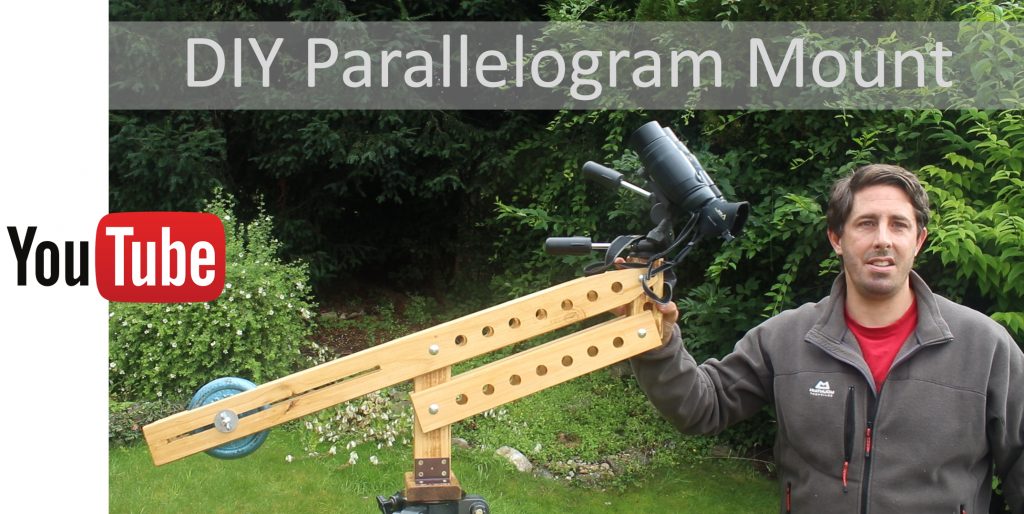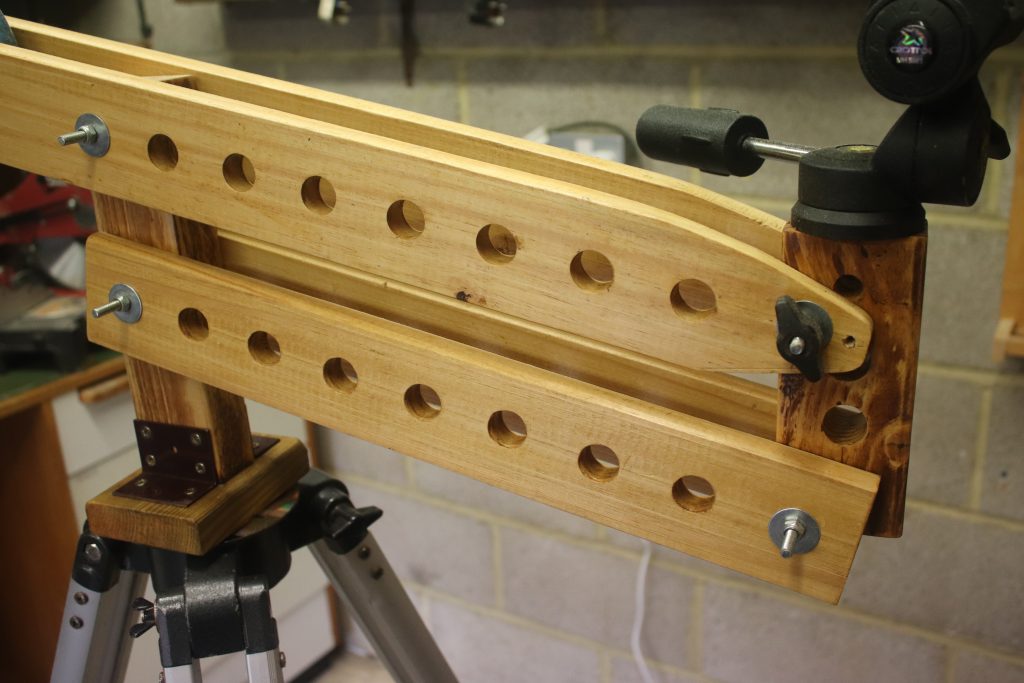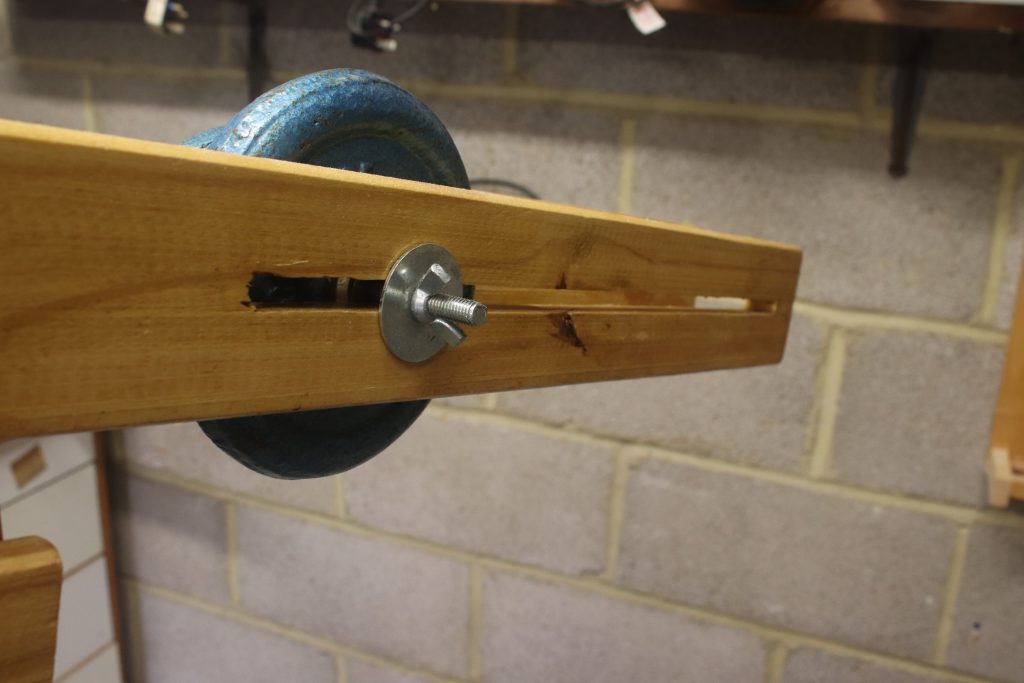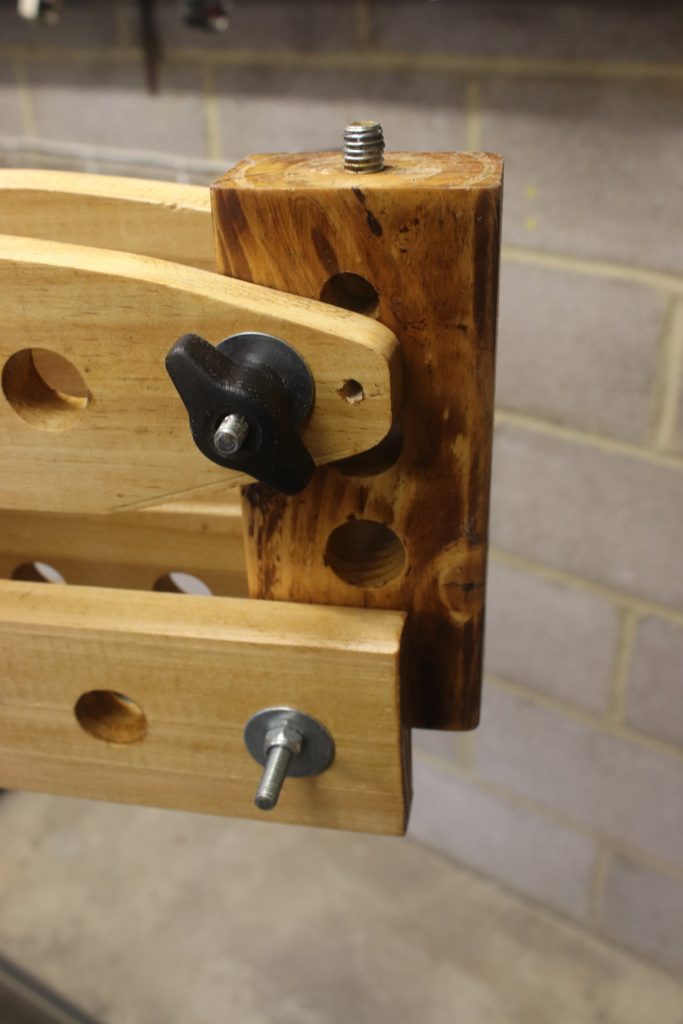Binoculars with their widefield of view, correct image orientation and the pleasure of using both eyes make a wonderful combination to explore the night sky. Through this I can explore the moon, solar system and travel through deep space.
While binoculars can be handheld, I find any observing programme soon benefits from a mount. Without a mount, the need to refind a place in the sky every time you make notes or refer to charts becomes frustrating.
The simplest approach is to mount binoculars on a portable camera tripod. This, though literally, become a pain in the neck as you cannot reach the eyepieces once the binoculars are titled to a high elevation.
A parallelogram mount solves both these problems. It is elegantly simple to make and yet so effective.
Adjustable in height and direction, binoculars can be pointed effortlessly around the sky and held in position. No more neck strain or loss of view.
This parallelogram mount was put together over a few evenings last week. There are no plans as I simply used various pieces of scrap wood and odds and ends in the garage. As there are no dimensions I suggest simply using an adapting whatever you have to hand.
A video is on the RefreshingViews channel describing the build process but in summary:
The plinth above the tripod is a pine offcut ~30x60mm that is butt-jointed to a 100mm-square piece of pine, held in place with two right-angle brackets with a carriage bolt epoxied through to provide a pivot. The plinth rotates on a CD resting on three furniture sliders above a secondhand EQ3 aluminium tripod.
Two long arms, with a slot to adjust the counterweights and two short arms carry the parallelogram itself.
A slot was cut for the counterweights to slide along to change the moment arm.
At the binocular end, another length of pine with a 3/8” camera tripod bolt epoxied in place carries a camera head. This will be replaced with a pan-tilt head when time allows.
The arms rotate about carriage bolts using nylon washers. 3 of the 4 are held in place with nyloc nuts while one uses a thumbscrew so the tension can be adjusted to allow effortless positioning.
To reduce the moment-arm, the upper sections were drilled with lightening holes.
A coating of wax to bring out the grain and a coating of varnish to provide protection were then applied.
How does it far in use? I find it so simple, cheap and utterly effective! With the thumbscrews adjusted correctly, the mount can be moved effortlessly to any point in the sky. I hope I can stay awake while observing from my sunlounger.
I can’t help but notice the downside to a parallelogram mount. Binoculars are attractive as they are so easy to carry and set up. Mounting them on a parallelogram mount requires a mount, tripod and counterweights, a clear loss of portability. For car-camping and garden use this should not be a problem so I look forward to using this in earnest once the skies clear.
We have some summer camping trips planned so this will be given a good trial while the barndoor-camera hunts for Perseid meteors.




